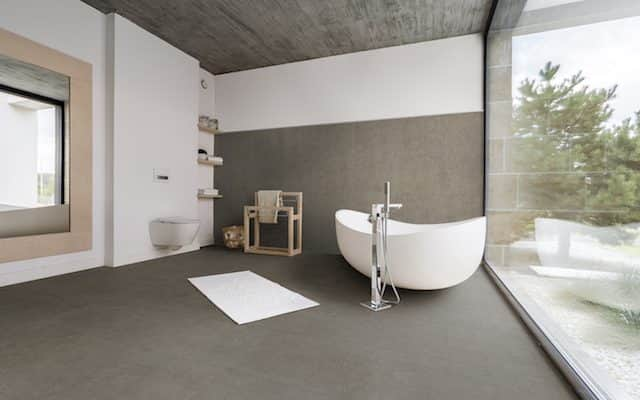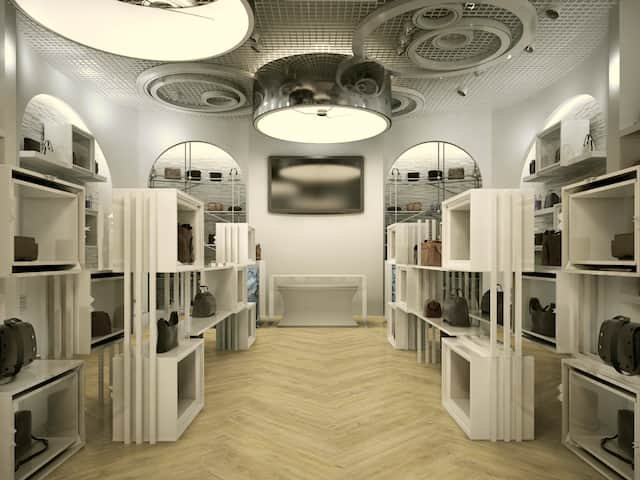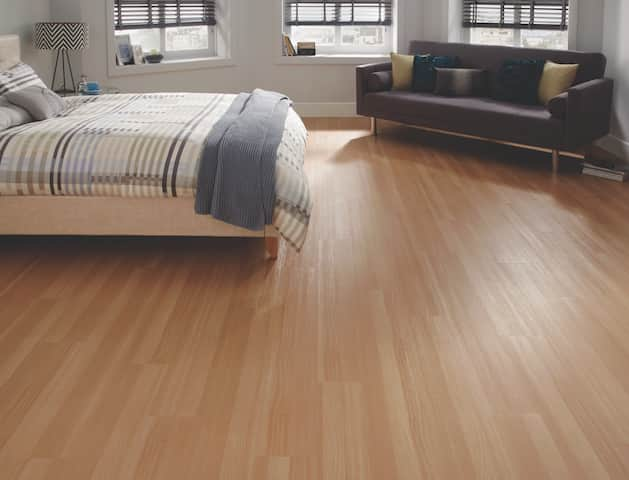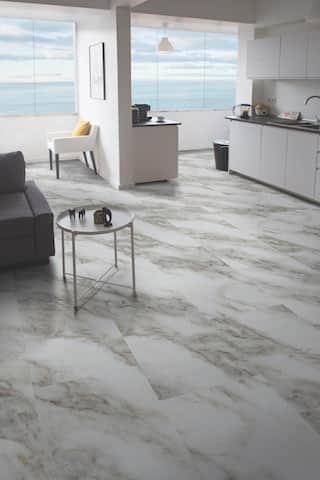
MMFA, the Multilayer Modular Flooring Association e.V. was founded in 2012 by European manufacturers of “design floors”, which are becoming increasingly established on the market. After a phase of self-discovery, for the first time a European flooring association granted membership in 2016 to those importers who offer full logistics, sales and technical advice in Europe. This created the conditions for real market coverage. Today, we can see that this type of floor has become firmly recognised, the individual product categories have found their specific applications and sales channels and expansion is running at full speed: an ideal breeding ground for innovations in various dimensions, both technical and decorative.
After a long process, the members of MMFA agreed for the first time on a clear categorization of floating floors and floors assembled from individual modules into:
- “Wood” – floors with carrier boards made of wood-based materials and surfaces made of polymer or a cork layer with a thickness below the cork floor standard,
- “Polymer” – floors with carrier plate and surfaces of polymer materials, and
- “Mixed” as a category for all other product structures.
This new categorization has to be clarified in order to understand from which segment MMF floors are currently drawing the strongest growth impulses. The category “Polymer” was later divided into “LVT Click” and “Rigid” floors, with the latter comprising so-called EPC (stands for “expanded polymer core”) and SPC (“solid polymer core”). Those “Rigid SPC” floors are now particularly popular.
MMF floors in general and the current growth drivers, Rigid SPC, are ideal for rooms where floors are exposed to heavy usage. Easy-care, durable, suitable for wet rooms, dimensionally stable: water resistance in particular is a “huge issue” for all floor coverings. As one expert phrases it: “For many consumers, the product property ‘waterproof, moisture-resistant’ has become a synonym for particularly insensitive and easy-care products, although this property is often not too important in normal living spaces.
Rigid floors are suitable for laying over existing, sometimes non-even subfloors (including ceramics, parquet or plank flooring), without too much preparation, minimizing the interruption of use due to short construction time. Since floating installation is used, no adhesives are necessary.
Other popular features are the warm, comfortable haptic of the polymeric surfaces and the fact that the floors are suitable for underfloor heating. Manufacturers are making a particular effort to create floor constructions with reduced footstep sound, which is important for apartments and flats, home offices or the conversion of old buildings into trendy lofts.

According to one manufacturer, a floor construction with an integrated back coating can reduce the sound transmission of footstep sounds into rooms below by up to 19 dB without the need for additional underlay materials. As alternative to polymeric underlays, other manufacturers offer various foams, fleeces or cork backings as suitable insulation materials.
Consumers increasingly expect “healthy living” and often look for “PVC and plasticizer-free” products. A new generation of vinyl flooring is now completely free of PVC while featuring the same properties as conventional PVC-based vinyl floors. Ecuran, a material consisting mainly of vegetable oils and naturally occurring materials, is used by another manufacturer for a particularly nature-friendly floor. This segment of MMF flooring based on alternative polymers (vs the “benchmark” raw material PVC) is opening up additional market shares in the overall growing market, at least in Europe. In this context, certifications with the well- known “Blue Angel” are also appearing. For example, the low-emission production and sustainable products of a manufacturer have been awarded with this environment certificate. In addition, with circular economy high on the European policy makers’ agenda, manufacturers are paying special attention to the sustainability and recyclability of their products with labels such as “100% recyclable”. The MMFA and its members are pro-actively engaged in current discussion on sustainability.
Oak in all nuances of nature – concrete and stone look
At the checkout, consumers continue to vote for a trend in decorative floor coverings: oak in all the nuances of nature, even with visually unchanged flaws such as knots and a wider range of colours. In stone decors, the entire palette of grey tones is dominating, and in contrast, the colourful combinations of Portuguese tiles. Always important is the “natural” and “authentic” look: the floor must look like the original – in deliberate contrast to the “artificial”. There are fewer alienations, but instead the scattered traces of saw cuts.
Other topics in the decorative area are surrounding lacquered bevels, coniferous wood optics, or the exciting “fusion” attempt to systematically combine wood and stone optics for joint laying. Colour tendencies in woods are becoming less yellowish, more tobacco- coloured, more medium and lighter, whitish tones are on the rise, the natural impression, rather greyish, less rustic. An opinion from Italy: “Architects like to combine very natural colour tones with the right furniture”. Herringbone also plays a role as a particularly decorative laying method. With a single profile and a laying method taken over from the parquet tradition, you can create your own personal, individual floor.
A new collection is particularly creative with a colour and decor combination linking living space with real parquet flooring and kitchen with waterproof vinyl flooring. One stands out by avoiding pattern repetitions on the individual planks and mirroring effects of the original grain. This results in a very authentic installation pattern, rounded off by the impression of brushed surfaces, resulting in a very natural feel.
The formats of the individual floor modules determine not only the technical side of the installation, but also the appearance of the finished floor in the room. Classic plank formats range from approx. 1200 x 180 mm, but experts see a clear trend towards wider and longer planks, up to 200 cm and more, for floors with a wood look. The higher proportion of stone and concrete look that MMF floors traditionally have, is reflected in tile formats ranging from 300 x 600 mm to 900 x 450 mm. In some markets, tile and stone decors already account for more than 30%.
Further significant growth expected
According to individual providers, the expectation of stable growth is also confirmed for the coming years. One particularly creative specialist offers an indication of a substitution attack on a huge market: ceramics on a waterproof carrier material with a click profile, so-called “drytiling”. Combined with the infinite possibilities of digital printing, one can guess what potential this company is aiming for. Speaking of application areas: MMF floors have established a firm position in the professional contract business, especially in the retail sector, primarily because of their durability, individuality and ease of care.
Floor coverings made of solid surface materials have established themselves as an alternative to classic ceramic tiles. These ceramic-like products have particularly attractive properties. The production of this type of flooring is energy-saving, as it can be produced without polymers and the components can be joined at low temperatures, while ceramics have to be produced at temperatures of over 1000 degrees. The finished product is very resilient and robust, making the material ideal for use in floors and walls.
The statement of a member of the MMFA Board is clear: “We expect further significant growth in the market for LVT products in the broadest sense and MMF floors with click connections in particular in the coming years. This encourages us to invest both in the expansion of existing production and to build a new production facility in the USA”.
